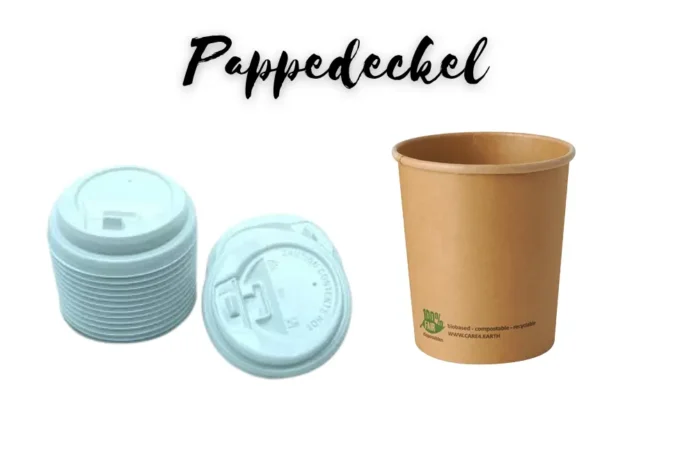Introduction
With the choice of sustainability and green practices no longer an option but the standard procedure in business, Pappedeckel is among the world’s top sustainable packaging companies. As companies transition to more sustainable business models, products provided by Pappedeckel are shifting consumer and business perceptions regarding disposable coverings and containers. This article brings you near to all that you would want to know about Pappedeckel, from how it is made to its multi-purpose uses and its impacts on the environment.
What is Pappedeckel?
Pappedeckel is a stiff cardboard lid, normally applied as the lid for paper cups, food packaging, and take-away food. In contrast to ubiquitous plastic lids, which are stupendously environmentally harmful, Pappedeckel products are derived from renewable sources and are normally 100% biodegradable, compostable, or recyclable.
The Emergence of Green Cardboard Lids in Packaging Innovation
Breaking Free from Plastic
As single-use plastics are prohibited in the European Union, companies have jumped at the chance to adopt the cardboard option. Pappedeckel is pioneering the path to realizing this dream, providing strength, insulation, and affordability to an eco-friendly package.
Otherwise plastic lids or not, usually need industrial composting. Most Pappedeckel lids, however, are naturally biodegradable or can be recycled by standard municipal plants, saving tons of carbon footprints.
Process of Making Pappedeckel
1. Raw Material Sourcing
Pappedeckel is usually made from virgin or recycled paper pulp of forests that have been sustainably cultivated, whose certification process is managed by bodies such as FSC (Forest Stewardship Council).
2. Processing of Pulp and Forming Sheets
The pulp is filtered, washed, and pressed into thin fine sheets, dried and made water-proof with food-grade coatings such as PLA (polylactic acid) or wax-based chemicals.
3. Cutting and Forming
The sheets are heat-pressed into round or bespoke-diameter discs. Discs are heat-pressed into moulds that create a slight concavity—ideal for use as food container or coffee cup covers.
4. Branding and Printing
Companies are also equipped with company names, promotional phrases, or messages for the environment printed on Pappedeckel via custom imprinting. The lids may be printed with soy- or water-based inks with no compromise on compostability.
Advantages of Using Pappedeckel Over Plastic Lids
1. Eco-Friendliness
Pappedeckel is a zero-waste package. It’s recycled, composted, or incinerated and leaves very little carbon behind compared to plastic.
2. Insulation and Functionality
Because of air pockets in cardboard fibers, Pappedeckel is a good heat insulator, warming up hot drinks for a few hours longer and warming users’ hands.
3. Law Compliance
Using cardboard lids is also law-compliant with worldwide plastic reduction regulations, saving on the cost of fines and improving public image.
4. Brand Image and Marketing
Environmental-friendly branding is what green consumers love. Pappedeckel is touch-me and natural, greening your business.
Pappedeckel Types Available
1. Coffee Cup Lids
They are sip-hole fitted and utilized in cafes and kiosks for drinks. They offer secure closure, splash protection, and are readily available in several diameters for utilization with different cups.
2. Flat Container Lids
Utilized in food takeout, these Pappedeckel designs guarantee full surface contact and prevent things from contaminating as well as being utilized for temperature maintenance.
3. Dome-Shaped Lids
For beverages that require a bit of extra space (e.g., whipped cream-topped drinks or noodles), dome Pappedeckel offers the space and cover required, all without compromising ecopolitely.
Typical Industries Using Pappedeckel
Food & Beverage: Fast foods, cafes, and caterers make use of Poppedeckel because it is ecopopular and convenient to use.
Healthcare: Used in medical packaging, particularly sanitary or biodegradable packaging.
Retail Packaging: Eco-brands use Poppedeckel to seal or close eco-boxes or shipping sets.
Events and Festivals: Outdoor festivals or food courts rely on these lids for bulk vending without a guilty conscience.
Custom-printed Poppedeckel not only appears professional but also advocates brand values. Brands can print:
Logos
Sustainability Certifications
QR codes for campaigns
Messages such as “Plastic-Free” or “100% Compostable”
These customer touch points are an irresistible way of gaining eco-friendly customers.
Are Pappedeckel Products Really Compostable?
Most of them are indeed compostable certified to EN 13432. Compostability is, however, dependent on:
- The coating method employed (PLA vs plastic lamination)
- Waste treatment practice (domestic composting vs industrial treatment)
- Public awareness
Consumers need to learn how to dispose of Pappedeckel so that they will end up in compost heaps and not landfills.
Cost Difference: Pappedeckel vs Plastic Covers
Though costlier in the short run, Pappe deckel repays itself in the long run with:
Compliance with regulations
- Goodwill of customers
- Fewer charges related to the environment
- Differentiation of brand
Renewable packaging isn’t only the right thing to do but also a good business decision in the long run.
Global Trends and Market Outlook
Pappe deckel would grow exponentially until 2025 due to:
Government plastic bans
- Greener consumers
- Corporate ESG plans
- Upcoming biodegradable technology
Businesses are spending money on R&D to enhance water resistance, strength, and visual appearance.
The future of cardboard lid innovations
The future holds:
Two-layer Pappe deckel for optimal heat insulation
In-lid temperature sensors with smart lids
Lids constructed from agricultural waste by-product pulp (e.g., sugarcane, bamboo)
Zero-waste meal food cardboard alternatives
The future is practical, futuristic, and fully biodegradable lid options that push sustainable packaging to the limit.
Selecting the perfect Pappe deckel for your business
When choosing a supplier or product, consider the following:
Where does the material come from (FSC certified?)?
Biodegradability/Compostability rating
Size and weight for your packaging
Brand opportunity
Value-for-money
Certifications (EN 13432, BPI, ASTM D6400)
Choose partners that match your values of sustainability, quality, and openness.
Conclusion:
Pappedeckel is not a product—a product being a something made, something created to serve some use—it’s a statement, a commitment to responsibility, a commitment to sustainability, and an alternative for doing business. With legislation pending and customers’ expectations changing, the conversion to cardboard lids will be a requirement, not an alternative, shortly.
